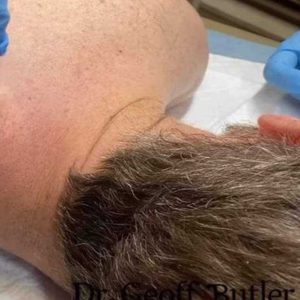The drainage of a knee hematoma is a common procedure performed to alleviate pain and swelling in the knee joint. When blood collects in the knee due to an injury or trauma, it can lead to significant discomfort and limited mobility. The buildup of blood, known as a hematoma, can put pressure on surrounding tissues and structures, exacerbating the pain.
During the drainage procedure, the patient is typically positioned comfortably, and the knee area is cleaned and sterilized to prevent infections. A local anesthetic is then administered to numb the area, ensuring the patient’s comfort throughout the process. This numbing agent helps minimize any potential pain or discomfort associated with the drainage.
Once the knee is adequately numbed, a small incision is carefully made over the hematoma site. The incision is strategically placed to allow for effective drainage of the collected blood. A specialized needle or catheter is then inserted into the incision site, reaching into the hematoma pocket. This step is crucial in facilitating the removal of the built-up blood from the knee joint.
As the needle or catheter is gently maneuvered within the hematoma, the accumulated blood is slowly aspirated out of the knee. The healthcare professional performing the procedure ensures a steady and controlled removal of the blood to prevent any sudden changes in pressure within the joint. This meticulous approach helps avoid potential complications and allows for a more comfortable experience for the patient.
Throughout the drainage process, the healthcare provider monitors the amount of blood being extracted and the patient’s response. Once an adequate amount of blood has been removed, the needle or catheter is carefully withdrawn from the knee. The incision site may be covered with a sterile dressing to promote healing and reduce the risk of infection.
After the drainage procedure, patients often experience immediate relief from the pressure and pain caused by the hematoma. The knee joint may feel lighter, and mobility can improve significantly. However, it’s essential for patients to follow post-procedure care instructions provided by their healthcare provider, which may include resting the knee, applying ice, and taking any prescribed medications.
In some cases, patients may need to undergo physical therapy to restore strength and flexibility to the knee joint fully. This comprehensive approach to treatment aims to not only address the immediate issue of the hematoma but also promote long-term healing and function of the knee. With proper care and follow-up, patients can typically expect a successful recovery from a knee hematoma drainage procedure.






